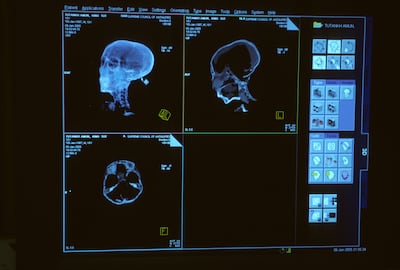Scientists from Australia, Italy and Brazil have digitally rendered King Tutankhamun’s face, the first time this has been done.
The boy king ascended to the throne of Egypt aged nine as one of the rulers of the 18th dynasty, until he died aged 19.
The researchers, whose efforts to reconstruct King Tutankhamun's face encountered several obstacles, such as access to his skull, eventually published their findings in a new study in the Italian Journal of Anatomy and Embryology.
The team used computer-generated models supplemented with pre-recorded measurements of King Tutankhamun's remains to render his face.
As the team did not have access to the skull itself, they imputed a digital scan of another and then adjusted the dimensions according to the measurements available to the team through other studies.
They were then able to approximate the shape of the pharaoh’s facial features including the size of his lips, the position of his eyes and the shape of his nose.
The reconstructed face looked markedly similar to a sculpture of the boy king found on the head of a lotus flower unearthed with his tomb, according to Michael Habicht, an Egyptologist and archaeologist at Flinders University in Australia and co-author of the study.
The reconstructed version was noted in the study for its youthfulness.

"He looks like a young man with a delicate face," said Brazilian graphic designer and one of the study’s co-author Cicero Moraes.
"Looking at him, we see more of a young student than a politician full of responsibilities, which makes the historical figure even more interesting."
King Tutankhamun's burial chamber was discovered in 1922 by renowned British archaeologist Howard Carter in the Valley of the Kings necropolis in Luxor.
It is one of the few ancient Egyptian tombs which were found almost intact, with treasures buried with the pharaoh still inside.
Other royal tombs had been repeatedly raided by graverobbers.
The Tutankhamun artefacts, 5,398 pieces in all, most of which are made of gold, are stored at the Grand Egyptian Museum in Cairo, which is still under construction.
Eighteen of the more modest pieces from the collection are on display at the Egyptian Museum in the capital's Tahrir Square.







